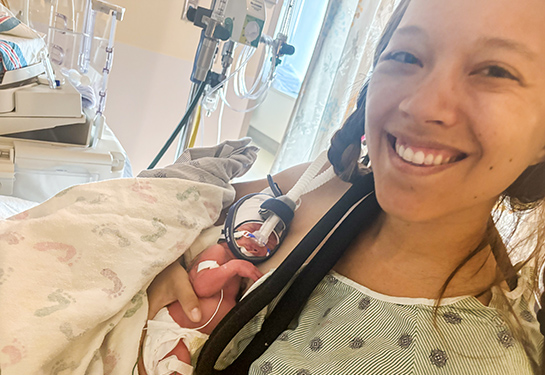Ten tips for using telehealth in diabetes care
UC Davis experts create a ‘how-to’ guide for using technology to improve patient outcomes
Telehealth can be an important tool for doctors to help their diabetic patients control symptoms of the disease and avoid its complications. Prior to the COVID-19 pandemic, however, very little diabetes care was provided using telehealth. Now, many diabetes practices that have adopted telehealth during the pandemic remain uncertain how to use it optimally.

UC Davis Health pediatric endocrinologist Stephanie Crossen has been working to change that.
In her clinic, Crossen treats children and teens with diabetes. She regularly uses video visits to check in with patients and their families between office visits, review blood glucose levels and adjust treatment plans as necessary.
“Telehealth is an incredibly important tool for ongoing communication with patients, and it is particularly well-suited for diabetes practice,” Crossen said.
While diabetes is a national epidemic, her young patients are part of a population at increasing risk for the disease. Treating it consistently and effectively will help them avoid outcomes like heart disease, stroke and kidney conditions.
Crossen and two of her colleagues, Jennifer Raymond of Children’s Hospital Los Angeles and Aaron Neinstein of UC San Francisco, have compiled their experiences with telehealth care for the benefit of their colleagues nationwide. Their insights are published in Diabetes, Technology and Therapeutics.
“Our goal is to encourage more diabetes specialists to use telehealth as part of patient-centered, value-based care,” Crossen said. “More than that, though, we want to give them very specific steps for making that happen.”
Ten tips for integrating telehealth into diabetes practice
Here is a summary of Crossen’s recommendations for the technical, clinical and communications needs related to efficiently integrating telehealth into diabetes practice. They can be viewed in their entirety online.
Technological requirements
— Stephanie Crossen
pediatric endocrinologist
- Hardware. Invest in a widescreen monitor and quality microphone. Ensure optimal lighting and room setup. If your workspace is noisy, add noise-canceling headphones to the list.
- Videoconference software. Numerous options exist for HIPAA-compliant video software. Some can be integrated with a health system’s electronic health records (EHR) system.
- Diabetes software. Select your preferred software application for reviewing data from patients’ diabetes monitoring devices. It is essential that this software meet your health system’s security and privacy standards.
Clinical requirements

Stephanie Crossen
- Consolidate visits. Set up your schedule to allow separate blocks of time for video visits. Include staff in communicating adjusted times with patients, just in case one visit runs late.
- Standardize processes. Develop clear standards with patients for necessary pre- and post-visit tasks (e.g., uploading data, laboratory tests, scheduling the next visit).
- Understand reimbursement. Review telehealth reimbursement codes and policies that apply to your practice location at the Center for Connected Health Policy website. Utilize appropriate codes for video encounters and reviewing remotely shared data.
- Integrate with EHR. Work with your electronic health records (EHR) team to optimize tools for telehealth billing, documentation and capturing diabetes device data.
Communications requirements
- Set expectations. Be clear with patients about billing, location, timing and frequency of video visits in your practice, as well as appropriate use of telehealth technology and remote data-sharing.
- Focus on patients. Use telehealth to promote patient-driven, patient-centered diabetes care with focus and timing based on patients’ individualized needs. Telehealth is particularly well-suited to developing an effective coaching relationship with patients.
- Prepare internally for culture change. Engage stakeholders within your organization about integrating telehealth into clinical practice. Also develop a formal telehealth onboarding processes for clinic providers and staff.
The endocrinology teams at UC Davis Health provide advanced, caring and respectful care for patients of all ages with type 1 and type 2 diabetes. For information, visit the websites for UC Davis Health adult endocrinology and pediatric endocrinology.



